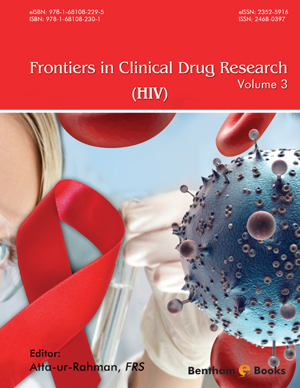Abstract
HIV protease plays a crucial role in the viral life cycle by processing the viral Gag and Gag-Pol polyproteins into structural and functional proteins essential for viral maturation. Inhibition of HIV-1 protease leads to the production of noninfectious virus particles and hence is an important therapeutic target for antiviral therapy in AIDS patients. It is a 99-residue protein belonging to the class of aspartic acid proteases, functioning as a catalytic dimer. The inclusion of protease inhibitors (PIs) in highly active antiretroviral therapy has significantly improved clinical outcomes in HIV-1 infected patients. The first HIV-1 protease inhibitors were developed in the mid- 1990s and approved for clinical practice by 1995. So far ten such drugs have been approved for HIV treatment by the US Food and Drug Administration, including saquinavir, indinavir, ritonavir, nelfinavir, amprenavir, lopinavir, fosamprenavir, atazanavir, tipranavir and darunavir, and broadly divided into first, second, and third generations. Expect for tipranavir, all of them are competitive peptidomimetic HIV protease inhibitors, which are able to mimic the transition state of HIV-1 protease substrates. However, the rapid emergence of drug-resistant HIV-1 strains and the appearance of cross-resistance are severely limiting the long-term treatment options, all of these make it urgent to develop new HIV protease inhibitors to combat the global disease. Thus, numerous efforts have been made in the design and synthesis of novel protease inhibitors with broad-spectrum activity against multidrug-resistant HIV-1 variants by medicinal chemists. Recently, considerable attention has been paid to the development of newer compounds capable of inhibiting wild-type and resistant HIV-1 protease. In this review, we have made an attempt to provide an overview on newly developing peptidomimetic and non-peptidomimetic PIs, and treatment of related recent patents in the development of novel PIs.
Keywords: Antiviral efficacy, Development, HIV, Modify, Peptidomimetic PIs, Non-peptidomimetic PIs, Toxicities, Treatment.






















